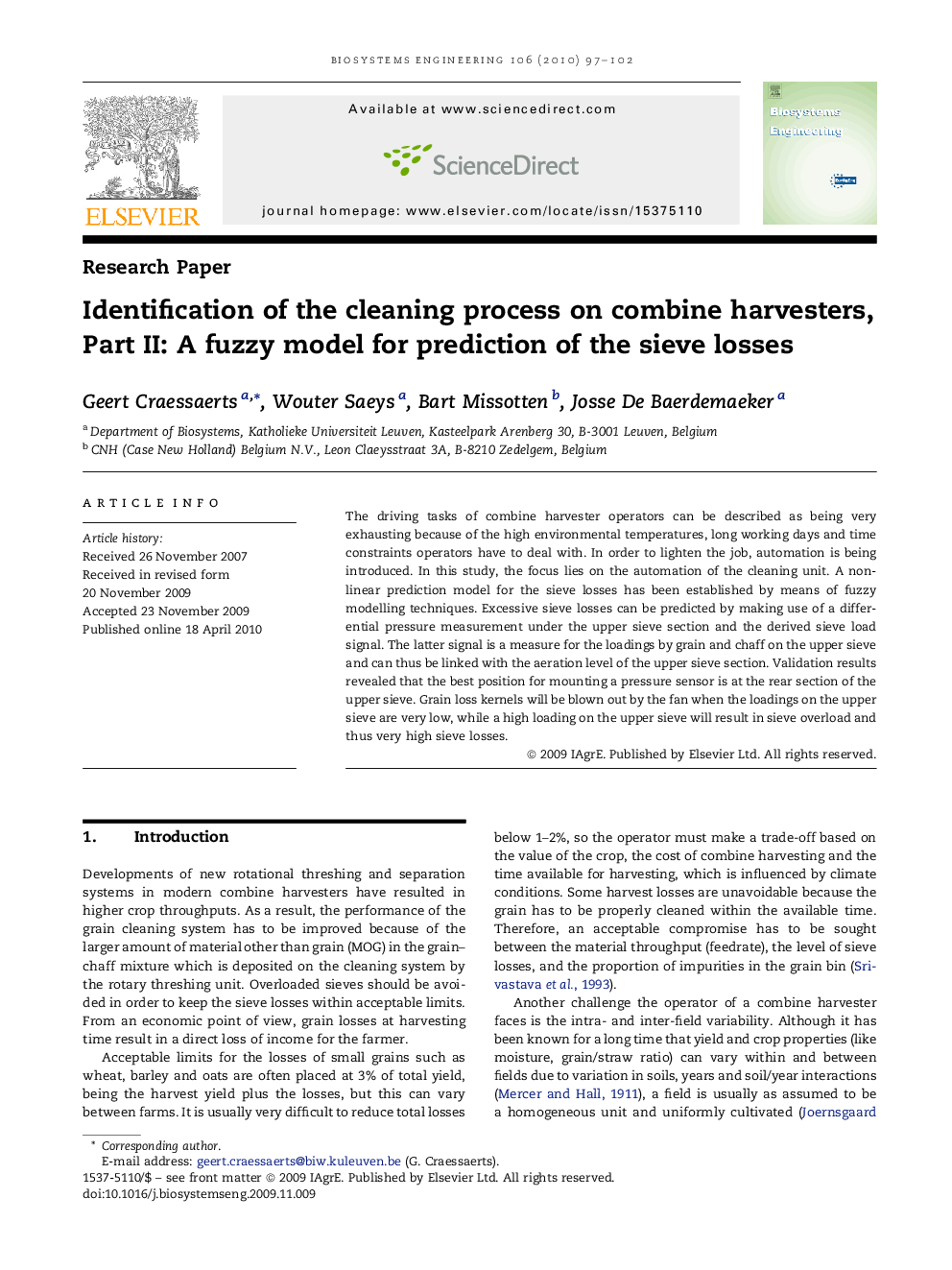| Article ID | Journal | Published Year | Pages | File Type |
|---|---|---|---|---|
| 1711831 | Biosystems Engineering | 2010 | 6 Pages |
Abstract
The driving tasks of combine harvester operators can be described as being very exhausting because of the high environmental temperatures, long working days and time constraints operators have to deal with. In order to lighten the job, automation is being introduced. In this study, the focus lies on the automation of the cleaning unit. A non-linear prediction model for the sieve losses has been established by means of fuzzy modelling techniques. Excessive sieve losses can be predicted by making use of a differential pressure measurement under the upper sieve section and the derived sieve load signal. The latter signal is a measure for the loadings by grain and chaff on the upper sieve and can thus be linked with the aeration level of the upper sieve section. Validation results revealed that the best position for mounting a pressure sensor is at the rear section of the upper sieve. Grain loss kernels will be blown out by the fan when the loadings on the upper sieve are very low, while a high loading on the upper sieve will result in sieve overload and thus very high sieve losses.
Related Topics
Physical Sciences and Engineering
Engineering
Control and Systems Engineering
Authors
Geert Craessaerts, Wouter Saeys, Bart Missotten, Josse De Baerdemaeker,
